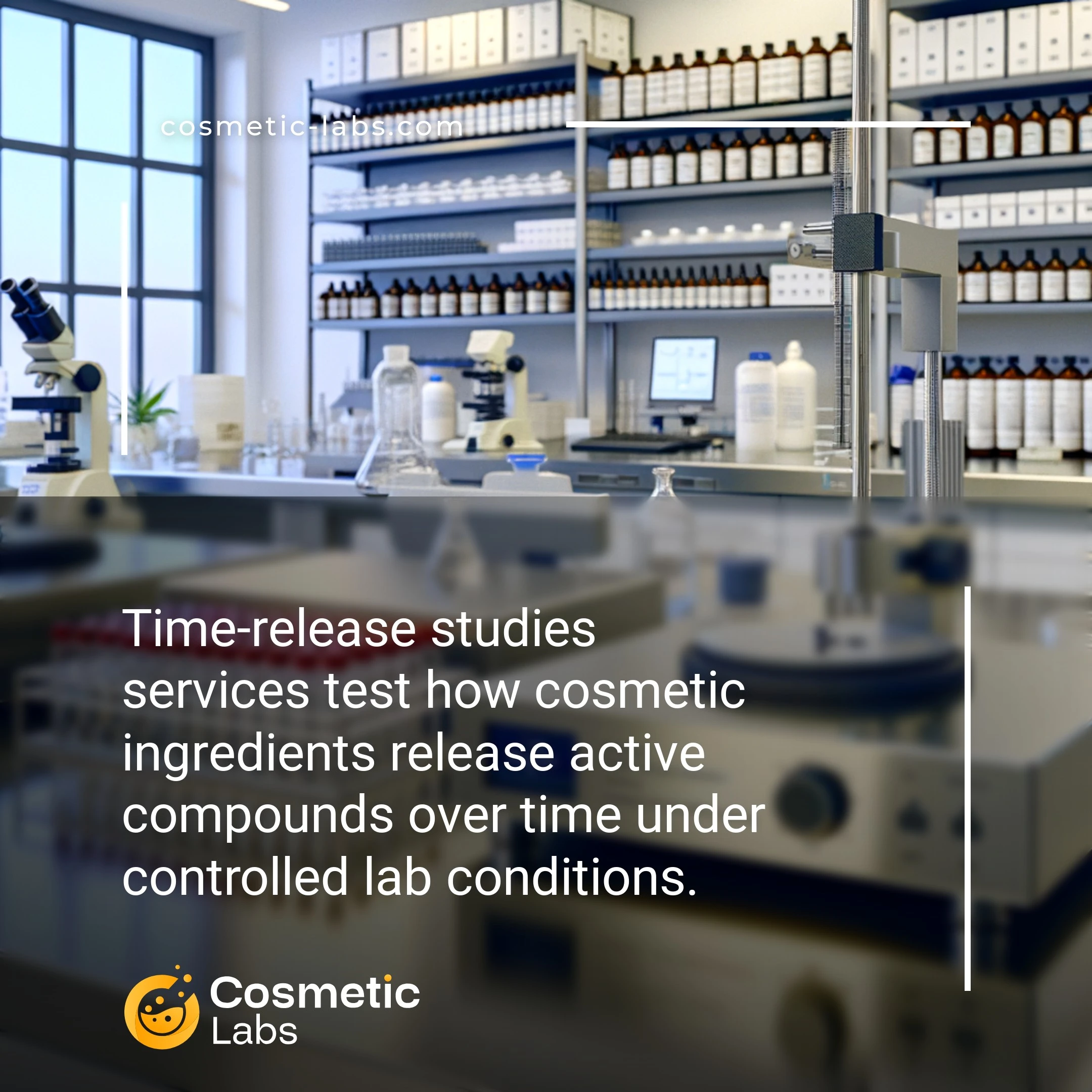Time-Release Studies Services for Effective Cosmetic Formulations

What is Time-release studies?
Time-release studies track how cosmetic actives release from formulations over hours or days, measuring ingredient delivery rates through specialized testing methods. Labs use Franz diffusion cells and synthetic membranes to simulate skin conditions, providing data on controlled release profiles that help optimize product performance. These studies reveal whether your vitamin C serum releases steadily over 12 hours or dumps everything in the first 30 minutes.
Why do you need this service?
Cosmetic labs apply time-release studies to verify that your anti-aging serum delivers retinol steadily over 8 hours or confirm your vitamin C moisturizer maintains stable release rates for 12-hour protection. These studies help brands validate marketing claims by measuring exactly when and how active ingredients penetrate skin layers, ensuring your sunscreen provides all-day coverage or your peptide treatment works overnight as promised.
Who provides Time-release studies services?
All cosmetic labs providing Time-release studies services
There is no company providing these services at the moment.
Time-Release Studies for Cosmetic Products
Time-release studies measure how cosmetic formulations deliver active ingredients over extended periods. These tests help labs verify that your product releases ingredients at the right rate—whether that’s a vitamin C serum providing all-day protection or a retinol cream working gradually overnight.
Testing Methods and Duration Analysis
Labs use controlled-release testing protocols to track ingredient delivery patterns. Franz diffusion cells and membrane permeation systems monitor how actives move through skin-mimicking barriers over 6, 12, or 24-hour periods.
Common time-release study parameters include:
- Release rate profiles at 30-minute intervals
- Active ingredient concentration curves
- Stability measurements under different conditions
- Comparison data against immediate-release formulas
Testing typically takes 2-4 weeks, depending on your product’s intended release profile and the number of formulation variants being evaluated.
Applications for Different Product Types
Time-release technology works differently across product categories. Encapsulated ingredients in serums might release over 8 hours, while polymer-based systems in moisturizers can extend delivery to 24 hours or more.
Labs test time-release mechanisms for:
- Anti-aging creams with sustained peptide delivery
- Acne treatments releasing benzoyl peroxide gradually
- Sunscreens maintaining UV filter distribution
- Color cosmetics with long-wear pigment systems
Results help you optimize formulations for better efficacy and reduced irritation. Labs on our platform specialize in matching release profiles to your product claims and target market needs.
Real-World Applications of Time-Release Studies in Cosmetic Development
Time-release formulations transform how active ingredients perform in skincare and cosmetics, making controlled-release testing a cornerstone of product development.
Anti-Aging Formulations and Retinoid Testing
Labs conduct time-release studies for anti-aging products to optimize retinol and peptide delivery over 8-12 hour periods. These studies measure ingredient concentration in skin layers using Franz diffusion cells and HPLC analysis.
Testing protocols track release rates at 2, 4, 6, and 8-hour intervals to ensure consistent therapeutic levels while minimizing irritation. Labs also evaluate polymer encapsulation systems that control vitamin C release, extending stability from 3 months to over 12 months.
| Active Ingredient | Standard Release | Time-Release Duration | Testing Method |
|---|---|---|---|
| Retinol 0.5% | 2-3 hours | 8-10 hours | HPLC + Franz Cell |
| Vitamin C 15% | 1-2 hours | 6-8 hours | UV Spectroscopy |
| Niacinamide 5% | 3-4 hours | 12 hours | LC-MS Analysis |
| Salicylic Acid 2% | 30-60 minutes | 4-6 hours | Tape Stripping |
Sunscreen and UV Filter Performance
Time-release technology in sunscreens requires specific testing to verify SPF maintenance throughout wear time. Labs perform water resistance studies at 40 and 80-minute intervals while monitoring UV filter distribution.
Studies track how encapsulated UV filters like avobenzone maintain photostability 3x longer than conventional formulations. Testing includes solar simulator exposure combined with extraction analysis to quantify active ingredient retention on skin after 2, 4, and 6 hours of wear.
